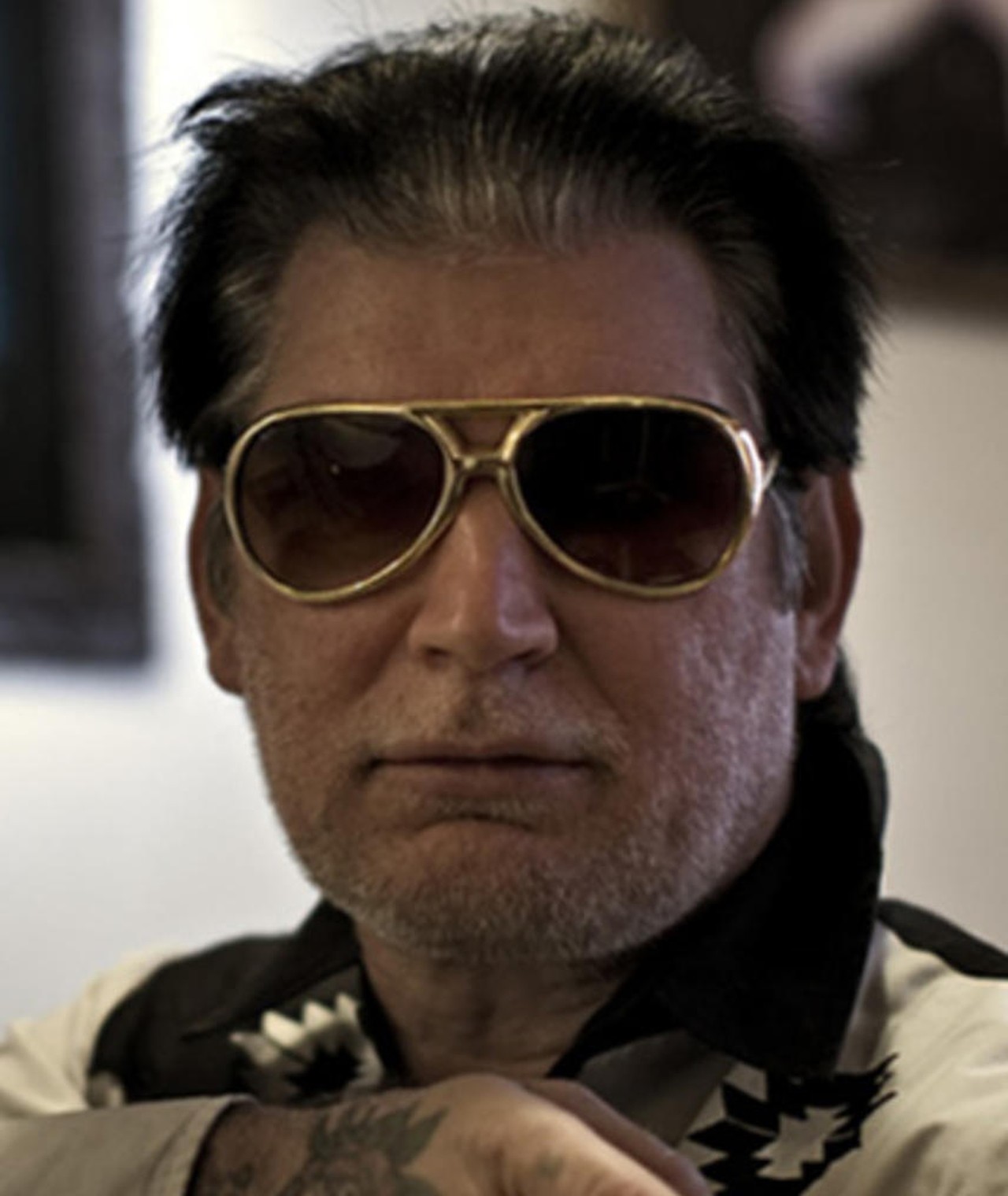Jesco White: Unpacking The Story Of Appalachia's Dancing Outlaw
Have you ever heard a tale so distinct, so truly American, that it just sticks with you? Well, the story of Jesco White, often called "the dancing outlaw," is that kind of story. It's a look into a truly unique life, full of rhythm and a spirit that just won't quit. People from all sorts of places have found themselves drawn to his particular brand of folk entertainment, and that's pretty cool.
He's a figure who, you know, really embodies a certain part of American culture, particularly from the Appalachian region. His movements, his music, and his general way of being speak volumes about where he comes from and the traditions he carries. It's a fascinating blend of personal expression and deep-rooted heritage, and it shows.
This piece will take a closer look at Jesco White, exploring his origins, how he got to be so well-known, and what makes him such a lasting figure in the minds of many. We'll touch on his beginnings, his rise to a kind of fame, and why his story continues to capture people's attention, even today. It's a rather interesting journey, you might say.
Table of Contents
- Jesco White: A Life in Motion
- Personal Details and Bio Data
- The Dancing Outlaw: How a Documentary Made a Legend
- Beyond the Dance: A Banjo Player's Heart
- A Lasting Legacy: Jesco White's Place in Culture
- Frequently Asked Questions About Jesco White
Jesco White: A Life in Motion
Jesco White, a name that certainly sparks curiosity, came into this world on July 30, 1956. He was born in Bandytown, West Virginia, a small community nestled quite near the Appalachian Mountains in Boone County. This area, with its rich history and distinct ways, really shaped who he would become. His early life was steeped in the traditions of his home place, and that's something you can still see in him.
From a very young age, around five years old, Jesco started to dance. This wasn't just any casual dancing; it was a skill passed down directly from his father, D Ray White, who was a tap-dancing legend. His father, Donald Ray White, was truly one of the greatest, and he shared his knowledge and passion with his son. This early teaching was, you know, absolutely fundamental to Jesco's development as a performer.
He grew up learning the intricate steps and rhythms that had been part of his family for generations. This form of folk dancing is very much a part of the Appalachian identity, and Jesco, in a way, became a living extension of that heritage. People often refer to him as "Appalachian royalty," which speaks to the deep respect and recognition he holds within that cultural space. It's a pretty big title to carry, and he does it.
His fame, or rather, his widespread notoriety, really took off with a 1991 PBS documentary. This film, simply titled "The Dancing Outlaw," showed his life and his unique style to a much wider audience. It brought his story, his struggles, and his incredible talent into homes across the country. That documentary, you know, changed things for him.
Through the film, people got to see the raw, unvarnished truth of his existence and his art. It introduced him as an American cult figure and an Appalachian legend, solidifying his place in popular culture. The documentary made him a symbol for many things, from resilience to the enduring spirit of mountain folk. It was a rather powerful introduction, honestly.
Personal Details and Bio Data
| Full Name | Jesco White |
| Also Known As | The Dancing Outlaw |
| Date of Birth | July 30, 1956 |
| Place of Birth | Bandytown, West Virginia, USA (Boone County, near Appalachian Mountains) |
| Father's Name | D Ray White (Donald Ray White) |
| Occupation | American Folk Dancer, Entertainer, Banjo Player |
| Known For | Unique folk dancing style, being featured in "The Dancing Outlaw" (1991 PBS documentary), Appalachian cult figure status |
| Cultural Significance | Referred to as 'Appalachian royalty' |
The Dancing Outlaw: How a Documentary Made a Legend
The year 1991 marked a significant turning point for Jesco White. It was then that the PBS documentary, "The Dancing Outlaw," made its way to screens. This film was not just a simple portrayal; it was a deep look into his life, his family, and his particular brand of folk dancing. It showed the world a side of Appalachia that many had never seen, and it did so with a certain honesty.
The documentary captured his raw energy, his unique movements, and the very personal stories that shaped him. It showed his struggles and his triumphs, painting a picture of a man driven by an innate need to dance. This film, you know, gave him a platform that he probably never expected. It introduced him as an American folk dancer and entertainer to a truly broad audience.
Before the documentary, Jesco was, in a way, a local treasure, known within his community and by those who sought out specific folk traditions. After "The Dancing Outlaw," his image and his story spread far and wide. He became a cult figure, someone whose life resonated with people who appreciated authenticity and the spirit of survival. It was a very powerful piece of filmmaking, honestly.
The film's impact was rather profound. It didn't just show his dancing; it explored the cultural context, the family legacy, and the personal challenges that made him who he is. People were drawn to his genuine nature and his refusal to conform to typical expectations. This made him, in a way, a symbol of individual freedom and expression. It's quite something to consider.
Even today, the 1991 documentary is often sought out by those curious about Jesco White. It remains the primary way many people first encounter his story and his unique talent. It cemented his place as an Appalachian legend, ensuring that his dancing and his life would be remembered and discussed for years to come. That, you know, is a real testament to its lasting power.
Beyond the Dance: A Banjo Player's Heart
While Jesco White is most widely recognized for his captivating folk dancing, there's another side to his artistic expression that many find equally compelling. He is, in fact, a masterful banjo player. This talent further connects him to the deep musical traditions of the Appalachian Mountains, a place where the banjo holds a very special spot. It's a rather important instrument in that culture, you know.
His skill with the banjo shows another dimension to his artistic spirit. It highlights how deeply immersed he is in the cultural fabric of his home. In the broad world of music, there are rare individuals who simply defy simple definitions, and Jesco White, with his banjo playing, is absolutely one of those unique people. He just plays with a feeling that's hard to describe.
The banjo, for many, is more than just an instrument; it's a storyteller, carrying the echoes of generations. Jesco's ability to play it so well adds another layer to his identity as a folk artist. It shows that his connection to Appalachian culture isn't just about movement, but also about sound and melody. This makes his overall contribution to folk art much richer, you see.
His musical talent, though perhaps less publicized than his dancing, is a significant part of his appeal to those who truly appreciate traditional American forms. It underscores his role not just as an entertainer, but as a keeper of cultural practices. He helps to keep these sounds alive, which is pretty important for heritage. It's just another aspect of his multifaceted talent.
So, while the image of the "dancing outlaw" is powerful, remembering his banjo skills gives a more complete picture of this American figure. It reminds us that artists often have many ways of expressing themselves, and sometimes, those quieter talents are just as profound. It's a rather nice addition to his story, honestly.
A Lasting Legacy: Jesco White's Place in Culture
Jesco White's presence in American culture goes beyond just being a dancer or a banjo player; he has become a lasting symbol. He's often seen as a representation of Appalachian culture, showing its resilience, its unique traditions, and its sometimes challenging realities. His story, you know, really resonates with a lot of people.
His status as a "cult figure" means that he has a dedicated following who appreciate his authenticity and the unfiltered way he lives his life. People are drawn to his story because it feels real and unpolished, a stark contrast to many polished public figures. This makes him, in a way, a genuine article in a world that often feels artificial. It's quite refreshing, honestly.
The documentary "The Dancing Outlaw" played a huge part in cementing this legacy. It introduced his life to a global audience, sparking conversations about folk art, regional identity, and the lives of those often overlooked. It allowed people to connect with a very human story, full of both hardship and joy. That film, you know, did something special.
Jesco's continued presence in popular discourse, even decades after his initial notoriety, speaks to the enduring power of his story. He remains a topic of discussion, a subject of fascination, and a point of reference for understanding a specific slice of Americana. He's not just a person; he's almost a cultural landmark for some. It's a pretty remarkable thing.
His artistry, whether through his energetic dancing or his soulful banjo playing, encapsulates the very spirit of Appalachian culture. He carries forward traditions, tells stories through his movements, and embodies a unique way of life. This makes him a significant figure, one whose influence, you know, continues to be felt. To learn more about Appalachian folk traditions, you can explore other resources on our site.
His story serves as a reminder that true art can come from unexpected places and that the most compelling narratives are often found in the lives of everyday people. He is, in many respects, a testament to the rich and varied tapestry of American identity. And you can find more details about his life and the impact of the documentary on this page.
So, the next time you hear about Jesco White, remember that you're not just hearing about a dancer; you're hearing about a piece of living history, a man who truly embodies the spirit of his homeland. His story continues to be a point of interest for many, showcasing the power of individual expression within a strong cultural context. It's a rather powerful narrative, you might say.
Frequently Asked Questions About Jesco White
What is Jesco White best known for?
Jesco White is widely known as "the dancing outlaw," an American folk dancer and entertainer. His fame largely comes from the 1991 PBS documentary titled "The Dancing Outlaw," which showcased his unique life and dancing style from West Virginia. He's also recognized as an Appalachian cult figure, you know, for his very distinct personality.
Where is Jesco White from?
Jesco White was born on July 30, 1956, in Bandytown, West Virginia, USA. This small community is located near the Appalachian Mountains in Boone County. His roots are deeply planted in this region, and his heritage, you see, is a big part of his identity.
Who taught Jesco White to dance?
Jesco White began dancing at a very young age, around five years old. He was taught by his father, D Ray White, also known as Donald Ray White, who was a legendary tap dancer. His father was considered one of the greatest, and he passed on his incredible skill to Jesco, which is pretty neat.

Jesco White – Movies, Bio and Lists on MUBI

Jesco White | GTA Wiki | FANDOM powered by Wikia

The Legend Of Jesco White: Beyond The Headlines